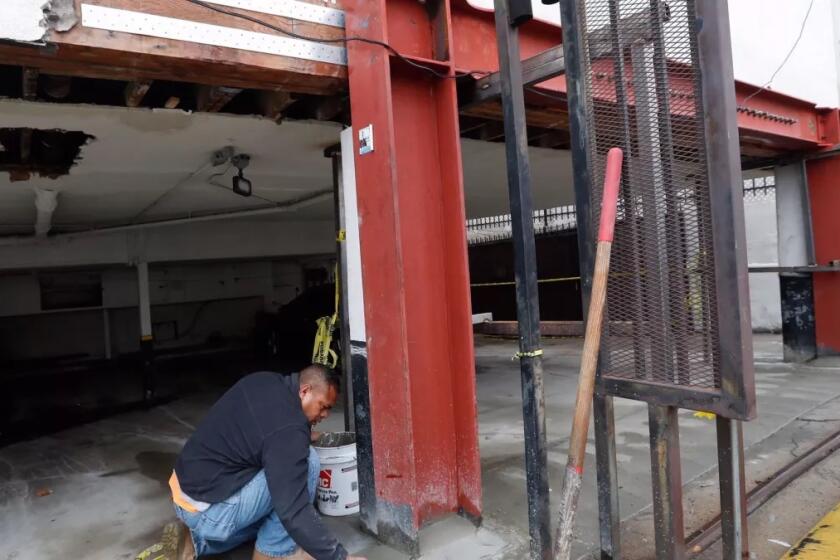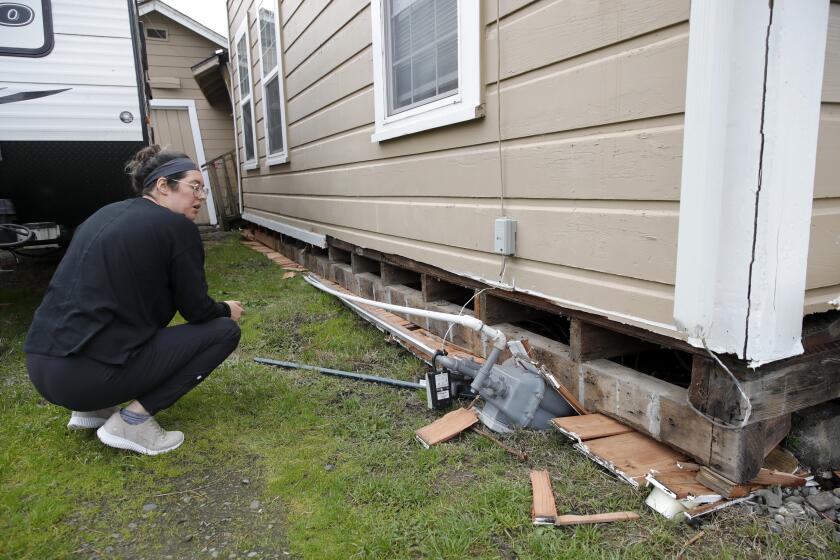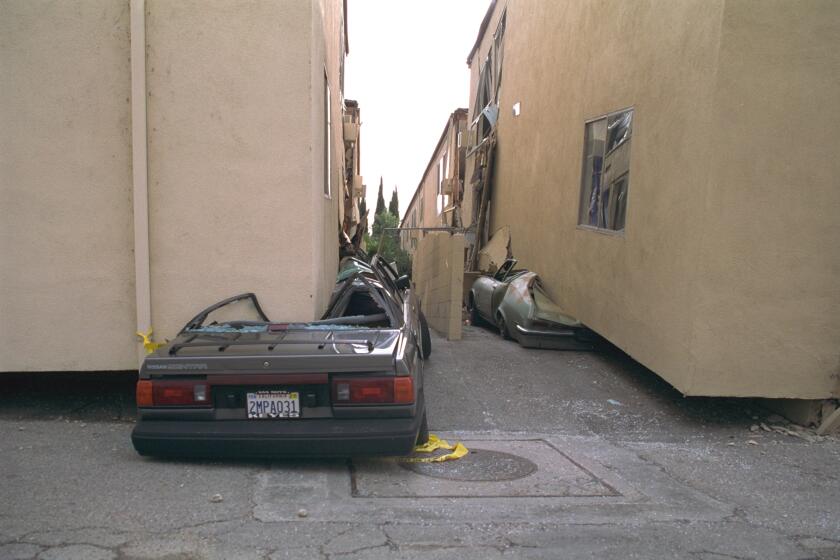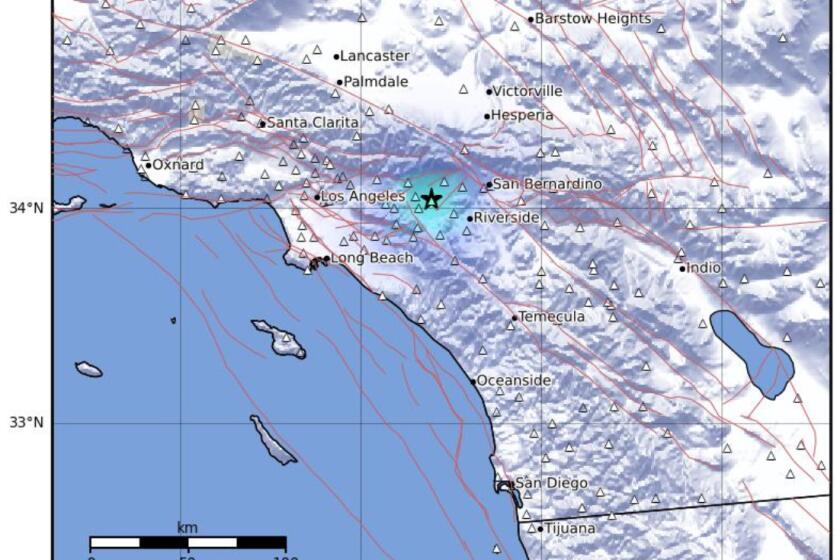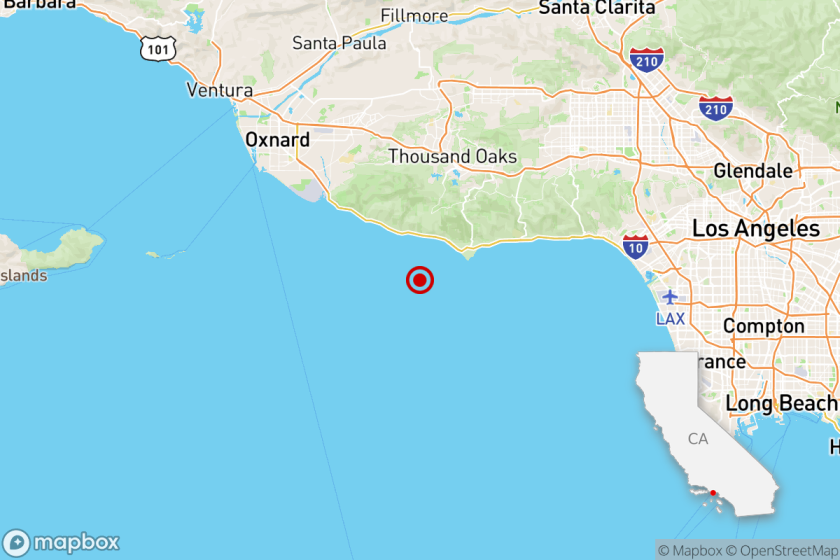What California can learn about earthquake safety from Santa Monica
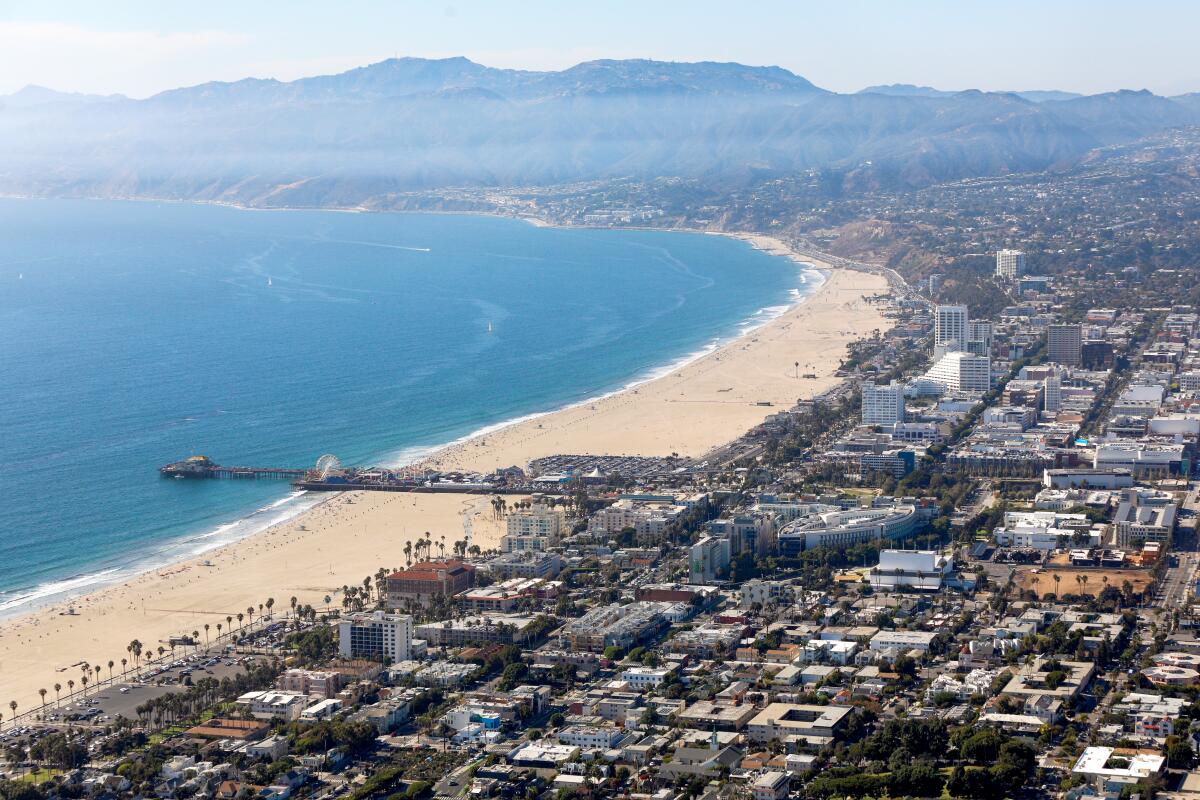
Santa Monica has emerged as a leader in California earthquake safety, retrofitting more than half of its seismically vulnerable buildings.
The ambitious effort to tackle upgrades to several types of structures that historically have amplified the death and destruction resulting from a major temblor has made the city a model as more communities grapple with seismic retrofitting.
“It’s pretty impressive how many buildings were retrofit since 2017, especially considering that we were dealing with COVID in the middle of all that,” said Patti Harburg-Petrich, former president of the Structural Engineers Assn. of Southern California.
After the 1994 Northridge earthquake, no city took more decisive action than Santa Monica, which despite being 14 miles from the epicenter, was hard-hit, with a loss of 1,500 apartments — or roughly 5% of the city’s stock.
But a decade ago, it had become clear that Santa Monica’s progress had stumbled. Administrative action to order fixes to quake-vulnerable buildings had stalled. And by 2013, the city couldn’t even find the list it had created of buildings that might be at risk, The Times reported.
That report prompted a new look at seismic safety. By 2017, Santa Monica adopted one of the nation’s most extensive earthquake retrofit plans — ordering again that nearly 2,000 buildings suspected to be vulnerable in earthquakes be retrofitted.
Last month, city officials announced that 1,099 buildings identified as seismically vulnerable are now compliant with the retrofit law.
Once considered politically impossible because of cost, requiring owners to retrofit their buildings gets overwhelming support from L.A. residents.
Of the city’s 1,964 buildings initially identified as vulnerable in a quake, five have been demolished. Updated figures show that 599 structures had previously been retrofitted or demolished, and since 2017, 500 more have been made compliant with the seismic safety law, representing 56% of the initial stock of earthquake-vulnerable buildings. An additional 865 buildings have not been retrofitted.
“We’ve made significant progress,” Santa Monica building and safety manager Ariel Socarras said at a recent City Council meeting.
Substantial improvements have been made in retrofitting “soft-story” buildings. They are primarily wood-frame apartment buildings, with carport parking spaces on the ground floor, held up by skinny, flimsy poles that support the apartment units above them. In an earthquake, the top-heavy apartments can come crashing down.
During the Northridge quake, the collapse of a soft-story apartment building resulted in 16 deaths.
These structures, also known as dingbats, can be retrofitted by installing a steel frame to support the ground story. Of 1,686 soft-story buildings, 495 were retrofitted before the latest law, and an additional 462 have been retrofitted in the last several years. More than 700 still have not been upgraded.
Homes with raised foundations can be susceptible to serious damage in an earthquake. California’s Earthquake Brace + Bolt program can help pay for seismic retrofits.
Santa Monica has until 2026 to upgrade its soft-story buildings.
More local governments in California have passed seismic retrofit ordinances in the last decade, but most cities still don’t have such laws in place, risking immense property destruction and threats to lives in a future earthquake.
In February, L.A. County took the first step toward a mandatory retrofit order for the types of concrete buildings that catastrophically collapsed in the devastating earthquakes that shook Turkey and Syria early this year. These buildings lack a sufficient configuration of reinforcing steel within the concrete frame, allowing chunks of concrete to explode from the columns when shaken, leading to a collapse.
The Board of Supervisors voted unanimously to ask officials to prepare new rules that would require county-owned “non-ductile” concrete buildings, as well as any in unincorporated areas, to be retrofitted.
A draft ordinance is expected to be presented to the board for a public hearing later this year, said Elizabeth Vazquez, a spokesperson for the Department of Public Works.
The totals underscore just how much the value of older buildings has soared, yet they remain vulnerable to major damage or collapse in the next big quake.
The supervisors also ordered officials to create an inventory of all soft-story residential buildings in unincorporated areas, where about 1 in 10 L.A. County residents live. The Apartment Assn. of Greater Los Angeles in February expressed opposition to such an inventory, saying doing so would probably cause owners’ insurance premiums to dramatically increase. The group added that landlords were still reeling from the pandemic-era eviction moratorium and rent freeze.
The renewed look at earthquake safety in Southern California comes after a 2013 Times report that focused on the city of Los Angeles and showed how officials knew about the deadly flaw of concrete buildings for decades yet did little to address it. In 2015, the City Council approved a landmark law requiring property owners in L.A. retrofit non-ductile concrete and soft-story buildings.
As of June, L.A. city officials reported that more than 8,900 seismically vulnerable buildings had been retrofitted, out of more than 13,600. Of those, 8,854 soft-story buildings have been upgraded, as have 68 non-ductile concrete structures.
Santa Monica and nearby West Hollywood have issued retrofit orders that go even further than Los Angeles’. Both cities also ordered vulnerable “steel moment frame” buildings to be upgraded.
A popular type of construction in which a building’s skeleton is made of steel beams and columns, such structures built before the mid-1990s can be vulnerable because of brittleness around the connection points.
During the 1994 Northridge earthquake, 25 steel moment frame buildings were significantly damaged, including the Automobile Club of Southern California building in Santa Clarita. That earthquake showed how cracks can form in the frames of these buildings during an earthquake.
A U.S. Geological Survey simulation released in 2008 of a magnitude 7.8 earthquake in Southern California said it’s plausible that five high-rise steel buildings holding 5,000 people could collapse.
In its most recent report, Santa Monica identified 80 steel moment frame buildings. Eleven have been retrofitted, and two have been strengthened since the latest retrofit law. The deadline is 2037.
Santa Monica officials also found that a little more than half of the city’s identified non-ductile concrete buildings have been retrofitted. Of the 66 buildings in this category, 32 have been upgraded and three others have been strengthened since the latest retrofit law. The deadline is 2027.
Retrofit deadlines have already passed for unreinforced masonry buildings, or brick buildings, as well as for concrete tilt-up buildings such as warehouses — built by tilting up concrete walls that had been made on the ground and attaching them to a roof. They can be vulnerable to collapse if the walls move away from the roof when shaken.
Of Santa Monica’s 90 unreinforced masonry buildings, 72 are compliant with the city’s ordinance; 18 remain to be retrofitted. For tilt-up buildings, of 42 that were identified, 22 are compliant.
The guide to earthquake readiness and resilience that you’ll actually use.
Another city that recently took action is Torrance. In March, the coastal suburb passed an ordinance requiring soft-story, non-ductile concrete, tilt-up and steel moment frame buildings to be retrofitted. About 1,300 buildings may be affected.
“This has been a long time coming,” Torrance Councilmember Mike Griffiths said, noting the idea has been under discussion since at least 2018. “There is enthusiastic support to move this forward.”
Noting the earthquakes that devastated Turkey and Syria, “we’d certainly want to do what we can to prevent that kind of destruction in our community should — when — that earthquake happens here,” Griffiths said.
Seismologist Lucy Jones said she was heartened by the retrofit progress. “Every building that’s retrofitted is not going to be killing somebody,” she said.
But the dozens of brick and concrete tilt-up buildings that remain vulnerable in Santa Monica are concerning, Jones said. These types of buildings have long been fixed in other jurisdictions, and they’re “the most dangerous types of buildings,” she said.
Santa Monica Councilmember Caroline Torosis expressed similar worries.
“There’s quite a few that still aren’t in compliance,” Torosis said. “We’ve seen these pretty destructive earthquakes happen recently. I think we know that this could happen here. We’re on a fault line.”
There are various estimates for how much building retrofits can cost; in general, the smaller the building, the lower the bill. In 2017, Santa Monica estimated a cost of $5,000 to $10,000 per unit to retrofit a typical soft-story building and $50 to $100 per square foot for non-ductile concrete and steel buildings.
In October, an analysis by structural engineer Keith Porter — an expert on California seismic safety issues — calculated that Los Angeles property owners already had spent more than $1.3 billion retrofitting about 8,000 soft-story buildings.
Failing to retrofit and dealing with the damage after a quake, however, could be far costlier, including building repair as well as the loss of rental income.
Other California cities that have implemented retrofit laws for soft-story buildings include Beverly Hills, Culver City and Pasadena in Southern California; and in Northern California, San Francisco, Oakland, Berkeley, Fremont and, most recently, the Marin County community of Mill Valley.
At a Mill Valley City Council meeting last month, structural engineer David Bonowitz noted there hasn’t been intense organized opposition to soft-story retrofit laws after they pass.
“Once the ordinance is in place, owners find it easy enough to comply, tenants find that it doesn’t interrupt them,” Bonowitz told the council.
“I don’t want to say that this is cheap, and obviously for some owners, it’s an unexpected expense,” Bonowitz added. But most owners are choosing to do the retrofit rather than ignore the order or abandon their buildings, he said.
San José and Long Beach have ordered inventories of soft-story apartments and are discussing ordinances to require retrofits.
Get earthquake-ready in six weeks
From building a kit to buying insurance, our Unshaken newsletter course will help you prepare.
You may occasionally receive promotional content from the Los Angeles Times.
More to Read
Get earthquake-ready in six weeks
From building a kit to buying insurance, our Unshaken newsletter course will help you prepare.
You may occasionally receive promotional content from the Los Angeles Times.
